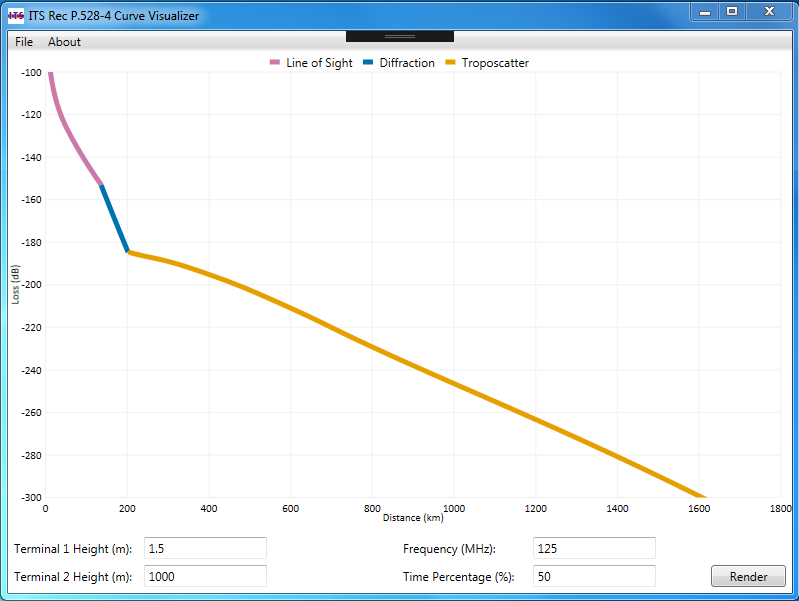Institute for Telecommunication Sciences / About ITS / 2019 / ITS Open Sources P.528 Reference Software Implementation
ITS Open Sources P.528 Software Implementation
May 9, 2019
ITS has a long history of leadership in air-to-ground propagation model development within the International Telecommunications Union – Radiocommunication Sector’s (ITU-R) Study Group 3 – Radiowave Propagation (and its predecessor organization’s such as the CCIR). Here, leading researchers across the world come together to collaborate and agree on how to properly and best model radio propagation to ensure accurate planning and protection activities. In the 1970s, fundamental research by ITS in air-to-ground modeling led to Johnson and Gierhart’s IF-77 model, which in turn led to the creation of Recommendation ITU-R P.528. This Recommendation takes the core theory developed in the IF-77 model and standardizes it as the way to model air-to-ground links at the international level.
Today, ITS publicly released the first software implementation of Recommendation ITU-R P.528. Until now, users of P.528 had a limited set of data curves available to them and were forced to interpolate to their desired combination of terminal heights, frequency, and time percentage. This newly released code base allows users to construct exact values for any valid input range. It also supports modern spectrum analysis approaches through the availability of cross-platform C++ code that can be easily incorporated into new and existing tools.
Improvements in propagation modeling through technically rigorous solutions by ITS support NTIA’s mission to improve frequency management and reuse, ensuring both National and International organizations can more accurately perform planning and coordination activities. Furthermore, in today’s environment, providing a supporting software solution for end users that implements the theory is critical to broad adoption. For example, the International Civil Aviation Organization (ICAO) began using a pre-release version of the software implementation in their working documents, using scenario-specific modeling data to support frequency assignment planning for various aeronautical radio navigation systems. The propagation model has also been successfully implemented in the ICAO frequency assignment planning software for test and trial purposes. In April 2019, this material was reviewed by the ICAO Navigation Systems Panel, which encouraged ITS to continue to standardization. Additionally, within the United States, P.528 is actively being used to investigate the spectrum sharing potential of frequency bands with existing air assets.
In keeping with our technology transfer mission, ITS has provided the source code at github.com/NTIA/p528, a compiled DLL at https://github.com/NTIA/p528/releases, and a pre-built executable that launches a graphical front end for this software implementation at github.com/NTIA/p528-gui. This screen shot shows the input boxes at the bottom where a user can enter variables to generate a graph that predicts propagation specifically for the communications system described by those variables. The graph plots propagation losses in decibels against distance in kilometers from the transmitter.
A copy of this software will be submitted as a U.S. contribution at the May 2019 meetings of ITU-R Study Group 3 in Geneva, Switzerland, for global acceptance and distribution, along with a proposed revision to Recommendation P.528 which will include the mathematical theory on which the software is based.




